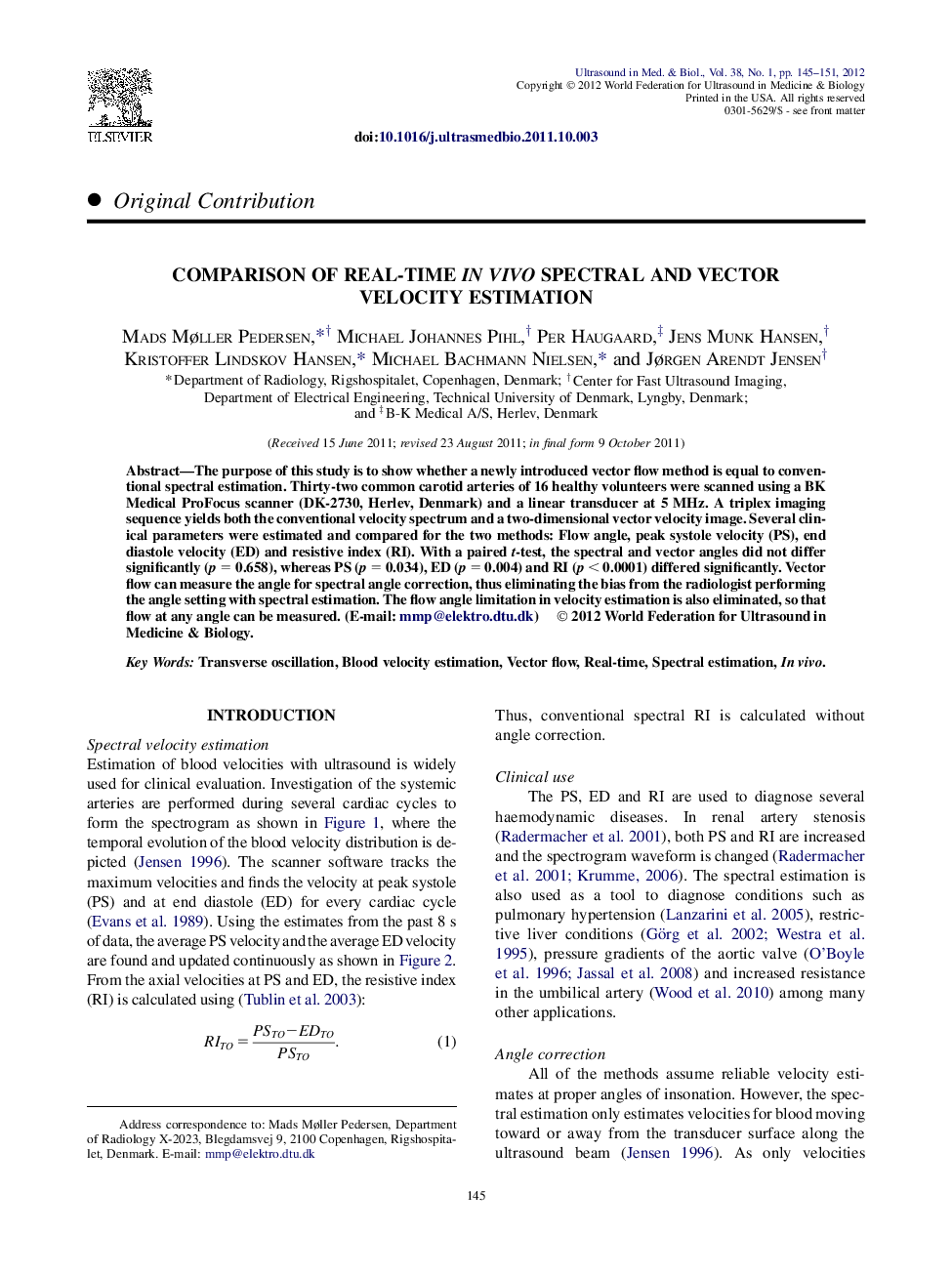| Article ID | Journal | Published Year | Pages | File Type |
|---|---|---|---|---|
| 1761574 | Ultrasound in Medicine & Biology | 2012 | 7 Pages |
Abstract
The purpose of this study is to show whether a newly introduced vector flow method is equal to conventional spectral estimation. Thirty-two common carotid arteries of 16 healthy volunteers were scanned using a BK Medical ProFocus scanner (DK-2730, Herlev, Denmark) and a linear transducer at 5 MHz. A triplex imaging sequence yields both the conventional velocity spectrum and a two-dimensional vector velocity image. Several clinical parameters were estimated and compared for the two methods: Flow angle, peak systole velocity (PS), end diastole velocity (ED) and resistive index (RI). With a paired t-test, the spectral and vector angles did not differ significantly (p = 0.658), whereas PS (p = 0.034), ED (p = 0.004) and RI (p < 0.0001) differed significantly. Vector flow can measure the angle for spectral angle correction, thus eliminating the bias from the radiologist performing the angle setting with spectral estimation. The flow angle limitation in velocity estimation is also eliminated, so that flow at any angle can be measured.
Related Topics
Physical Sciences and Engineering
Physics and Astronomy
Acoustics and Ultrasonics
Authors
Mads Møller Pedersen, Michael Johannes Pihl, Per Haugaard, Jens Munk Hansen, Kristoffer Lindskov Hansen, Michael Bachmann Nielsen, Jørgen Arendt Jensen,
